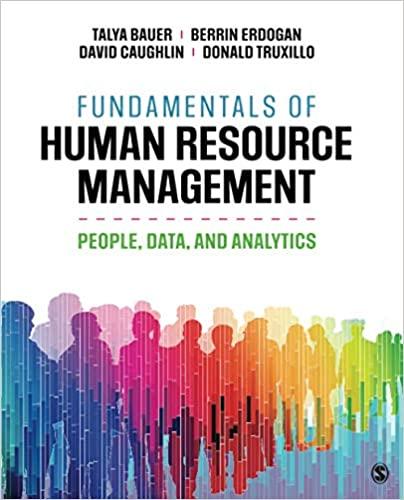Long-haul trucking often conjures images of open roads and beautiful scenery. Drivers are admired for the freedom
Question:
Long-haul trucking often conjures images of open roads and beautiful scenery. Drivers are admired for the freedom and independence that are often associated with this lifestyle. The reality, however, bears little resemblance to this picture. Today, professional truck drivers typically drive predetermined and optimized routes, with their stops, rests, and speed strictly regulated and watched. They are continuously monitored via video cameras and dashboard “black boxes” or electronic logging devices. They are solo workers, spending long hours in isolation, and with a median salary around $40,000 nationwide, it is not a scheme to get rich quickly. As a result, it is no surprise that there is a nationwide shortage of truck drivers, with estimates that by 2024, the size of the shortage will reach 175,000 drivers.
Freight companies and private companies that rely on truck drivers as a critical part of their logistics network find it extremely difficult to fill open positions. This is an industry in which there is great pressure to hire anyone who is qualified and interested. Once hired, the problem is to hold on to new hires, because the annual turnover rate has been 100% for several years in a row. These data do not only capture voluntary leavers; some drivers leave due to retirements, and others are dismissed for problematic behavior.
Still, holding on to good drivers is likely to give employers a key advantage in this highly competitive field.
One of the improvements to the hiring process based on their findings is to have a consistent message during recruitment regarding how much time drivers may expect to spend at home. Using data routinely gathered during hiring and through employee attitude surveys and exit interviews, it is possible to identify factors contributing to driver turnover in the entire industry, as well as to turnover within the specific company. A Chicagobased vendor, Enlistics, has an app drivers may optionally log into via their Facebook account during hiring. If they choose to do this, information in their Facebook profiles becomes part of a model used to predict eventual turnover. For example, the company found in a different industry that applicants who use the expression “I am sick of …” in their social media profiles tend to have higher turnover rates.
Case Discussion Questions 1. What types of data, in addition to those mentioned in the case, do you think can be used to develop predictive models regarding turnover? If you were developing such a model, what information would you want to collect so that you could predict turnover? Would you advise a company to use all information available to it in these predictive models?
2. Do you think the determinants of why employees quit and why they are dismissed would be different? What factors would you expect to be more closely related to voluntary turnover? What factors are more likely to predict whether the employee is dismissed?
3. What are the pros and cons of using social media profiles to predict turnover? What do you think about the ethics of this practice?
4. What are your thoughts about identifying the specific employees with high risk for turnover and intervening directly with them? What advantages and risks do you see in this approach? Do you think this approach is better than checking in with all employees regularly?
Step by Step Answer:

Fundamentals Of Human Resource Management People Data And Analytics
ISBN: 9781544377728
1st Edition
Authors: Talya Bauer, Berrin Erdogan, David E. Caughlin, Donald M. Truxillo





